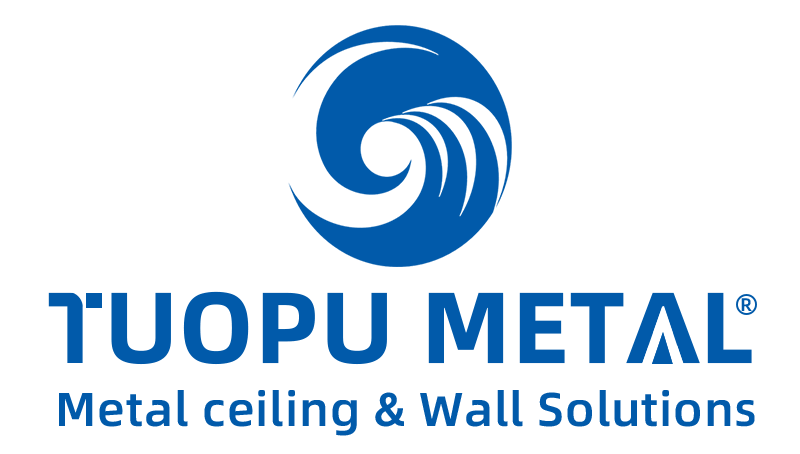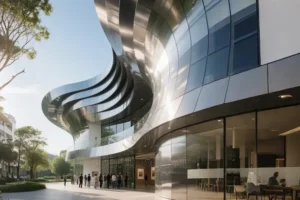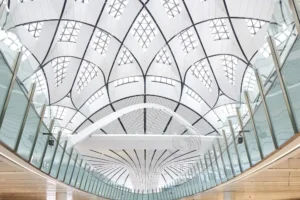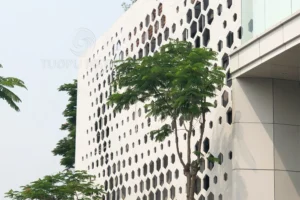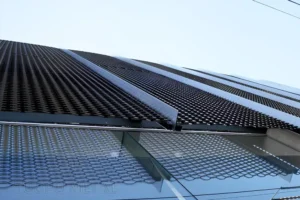Hyperbolic Aluminum panels are bent in two planes at the same time. These panels can be described as hyperboloidal. They give smooth three-dimensional curves. Bold and visually striking facades are constructed using these panels. Most architects appreciate the help these panels offer for the facades of the structures. You can find hyperbolic panels in museums, airports, hotels and other large scale projects.
There is a notable trend in design today with these styles in contemporary structures. The enthusiasm is more than ever before. Such forms assist in expressing imagination and ensuring individuality in every project.
This article explains why hyperbolic aluminum panels cost more than single-curved panels. It looks at the materials, production process, and level of detail needed.
What Makes a Panel “Hyperbolic”?
A hyperbolic panel is a type of aluminum panel that curves in two directions at the same time. This creates a complex, flowing surface. In comparison, a single-curved panel only bends in one direction, like a simple arc or cylinder. The difference lies in the shape. A single curve is easier to form. A hyperbolic shape needs more work because it bends both horizontally and vertically.
Hyperbolic panels are used when a design calls for movement and a sense of depth. These panels do not follow a flat or basic curve. Each one is shaped to match a specific part of the building. That is why the shape is hard to repeat. Most hyperbolic panels need to be custom-made.
These panels often appear in high-end buildings. You may see them in cultural centers, airports, landmark towers, and showpiece facades. They are used to catch attention and give the structure a modern, high-value look.
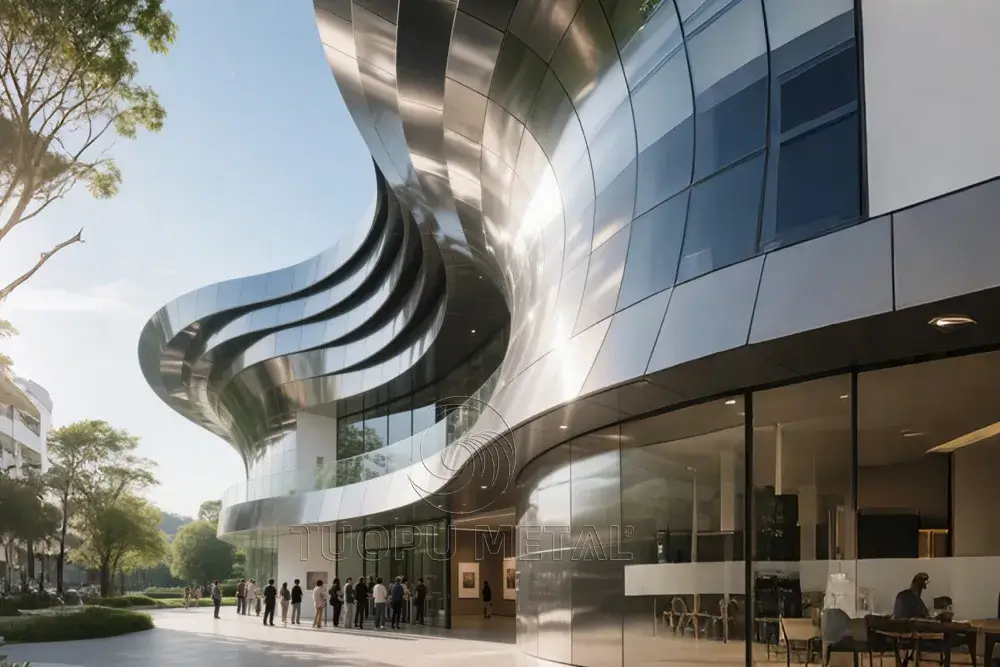
Key Factors That Drive Up the Cost
Hyperbolic aluminum panels are more expensive than regular curved panels. This is not only because of their special shape, but also because each step in the process costs more. From the material used to the way they are shaped and installed, every part takes more time, effort, and skill. Below are five key reasons that explain where the extra cost comes from.
Specialized Raw Materials: O-State Aluminum
Hyperbolic panels cannot be fabricated using standard rigid aluminum sheets. Such panels require two simultaneous bends which renders the material needing to be ductile enough so as to withstand deformation without fracture. Hence, manufacturers utilize O-state aluminum. This is an alloy that is more malleable than others and easier to form. It does not fracture when subjected to considerable stress due to its pliability.
However, O-state aluminum is more expensive than basic aluminum alloys. Additionally, it is weaker which means it possibly has to be made thicker to achieve the same performance level. This adds to the weight and cost of the panel. Because of these reasons, just the raw material used for hyperbolic panels already starts at a higher price.
Complex Processing Technology
Shaping a hyperbolic panel takes more effort than making a single-curved one. A single curve only needs to be bent in one direction. This can be done with common bending machines. But a hyperbolic shape must bend in two directions at the same time. It forms a 3D surface that twists and curves in different ways.
To achieve this shape, factories use advanced equipment. One example is the multi-axis CNC machine. It helps guide the material while shaping it in both directions. Sometimes, the process also needs a customized wooden mold. This mold is made only for one panel or one small batch, which adds to the setup cost. Workers must also spend more time during each step. It is slower, and each step must be checked carefully. The tools used wear out faster, and more manual adjustments are often needed.
All of this adds to the labor time and the use of more expensive machines and molds. The production speed is slower, and the cost keeps rising.
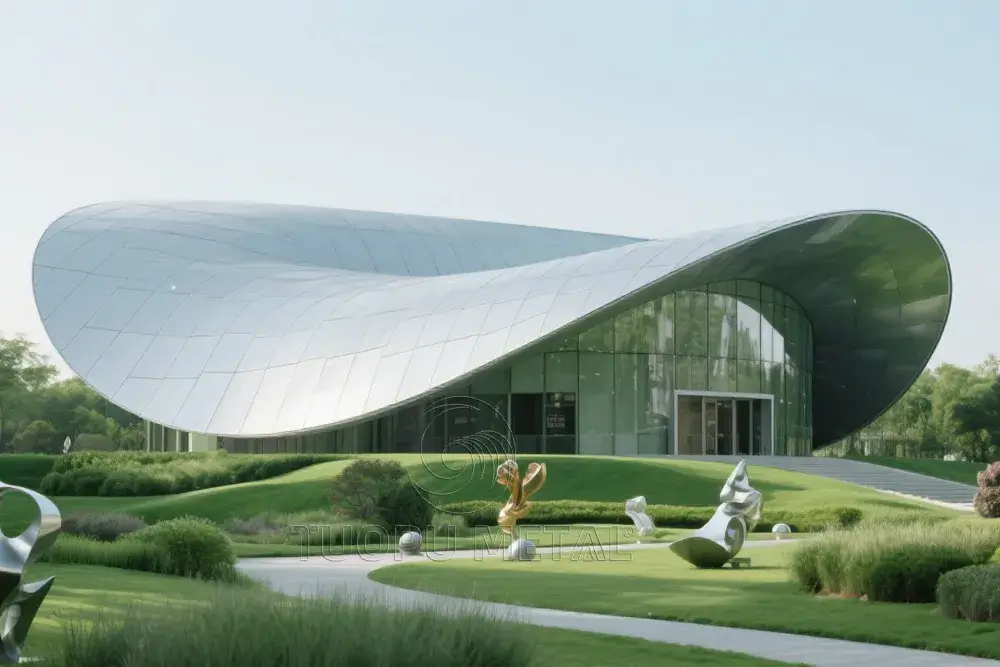
Higher Material Waste
When shaping a hyperbolic panel, material loss becomes a serious issue. Because of the complex curves, the panel may need to be stretched, pressed, or cut multiple times. The shape is not easy to predict, and errors happen during the trial phase. Often, the first few tries cannot be used. Workers must make test pieces until the shape is correct.
The aluminum sheet may wrinkle, tear, or become uneven during shaping. This waste cannot be reused. This leads to low material usage. The same sheet may only give one panel instead of two. In projects that use many hyperbolic panels, this loss adds up fast.
Strict Accuracy and Technical Demands
Hyperbolic panels are often installed on the outside of buildings. This means their shape must match perfectly. If the curves are not right, gaps will show up between the panels. This can ruin the look of the building. It can also cause water to leak through the seams. The final surface must be smooth and clean.
To meet these demands, production teams need advanced tools and high skill levels. Machines must be set up correctly for each panel. Workers must follow exact instructions and check each step. One small mistake can mean starting over. This need for perfect fit and clean finish increases the technical difficulty. The company must have both the right machines and skilled people to get good results. This makes the work slower and more expensive.
Customization Over Standardization
Most hyperbolic panels are made for one specific location on a building. The curve might be different for every panel. This means each panel must be designed and shaped one by one. There is no standard size or mold. Designers must create separate files for each piece. Molds may also need to be changed each time.
This is different from single-curved panels, which often use the same shape for many parts. They can be made in batches. The cost of the mold and setup can be shared across many panels. But for hyperbolic panels, there is almost no chance to reuse the same design. Every shape is new. That is why customization makes the process longer and more costly.
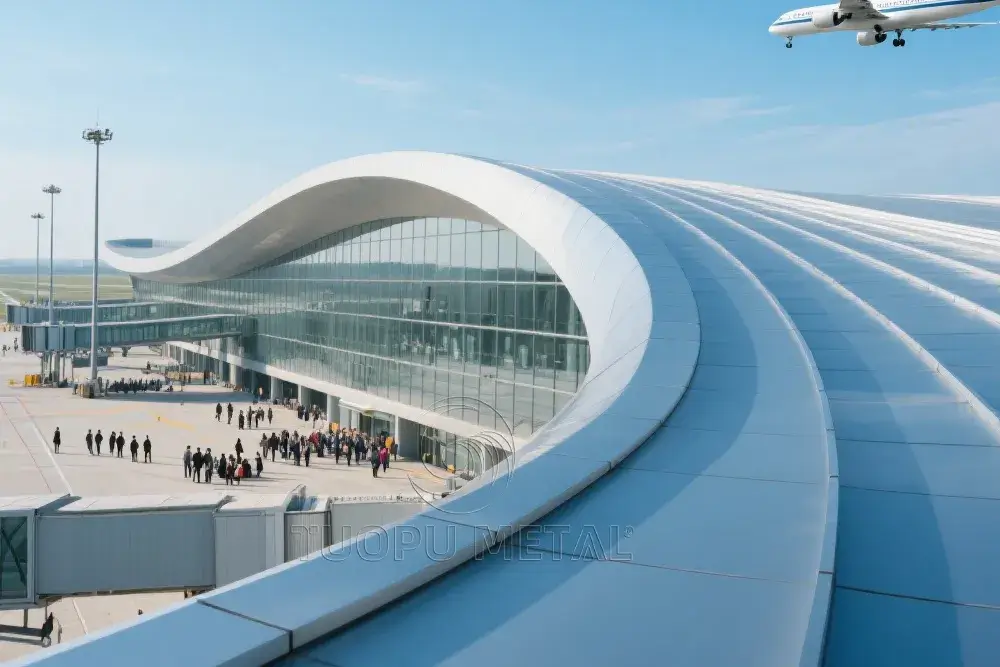
Conclusion
Hyperbolic aluminum panels are not just more costly, comparatively lower-grade panels are available in the market. The former comes with premium-grade materials and intricate shaping methods. Each unit’s curve is hyperbolic, meaning more skill, time and equipment are required for all processes to be correctly accomplished. Such work requires more than basic tools and off-the-shelf components.
These panels are often used in high-end projects where visual impact matters. They bring modern style, depth, and smooth flow to the building surface. Hyperbolic panels help turn ideas into reality when precision and design are key factors. Such combination makes Hyperbolic panels attain high value owing to their unmatched aesthetic and functional properties.
Lesser known manufacturers of thin custom aluminum work are likely not to have experience with such custom demanding projects. That is why picking the right one at this stage is the most important step. With over two decades under their belt, Tuopu Metal has the expertise in custom aluminum panel solutions. Tuopu Metal is capable to manufacture the required precision at the exacting standards due to possessing advanced machines, employing skilled workers, and exercising stringent quality control, all crucial for complex hyperbolic designs.
